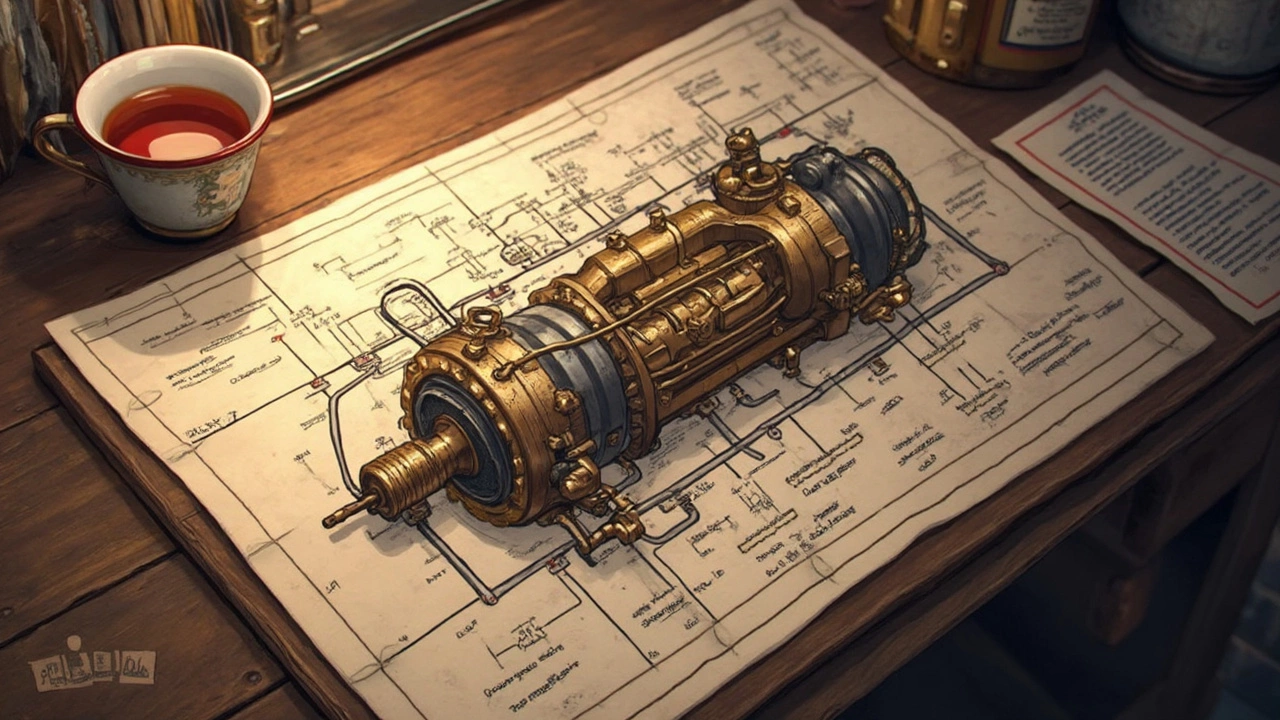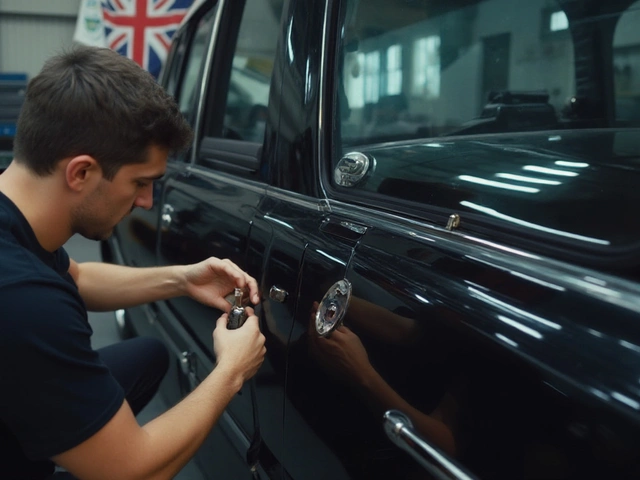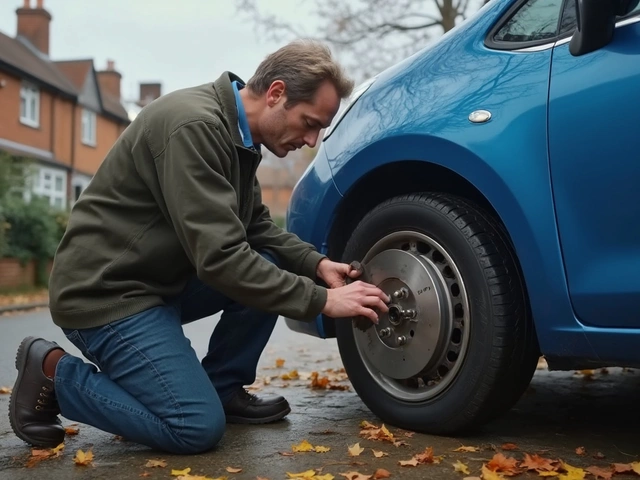Ever found yourself scratching your head about car troubles, especially when it comes to fixing a fuel pump? You're not alone! The time it takes to mend or swap out a fuel pump hinges on a bunch of factors. And let's face it, each situation can be a little different. But don't worry, we've got you covered with the basics you need to know to tackle this issue.
First off, if your car's been sputtering to a halt more than often, it might be your fuel pump raising the white flag. When it's time for repairs, knowing what's ahead can save you some stress and a good chunk of change. From the nitty-gritty of getting to the pump to actually fixing or replacing it—each part of the process can affect the clock.
Usually, a pro mechanic might spend about 2 to 3 hours to switch out a fuel pump. But if you're feeling ambitious and want to do it yourself, arm yourself with patience! Depending on your car model and expertise level, it could take quite a bit longer. Wondering what can make such a time difference? Things like your car model, your experience level, and even the tools you have can tilt the scales.
- Understanding Fuel Pumps
- Signs Your Fuel Pump Needs Fixing
- Steps Involved in Repairing a Fuel Pump
- How Long Does Each Step Take?
- Factors Affecting Repair Time
- Tips for a Smooth Fuel Pump Replacement
Understanding Fuel Pumps
Okay, so what exactly does a fuel pump do? At its core, a fuel pump's job is to move fuel from the tank to the engine efficiently. This might sound simple, but without it, your engine wouldn't even have a chance to start its rhythmic dance.
Most modern cars use an electric fuel pump, which is typically mounted inside the fuel tank. Why inside? Placing it there helps to keep it cool and, by submerging it in fuel, reduces the noise and helps extend its lifespan.
Types of Fuel Pumps
Now, depending on your car, you might find a mechanical fuel pump, which is usually found in older models and sits on the engine. These pumps work on the old-school principle, using the engine's motion to pull the fuel.
Just so you have a reference, here's a simple comparison of electric and mechanical fuel pumps:
| Type | Location | Common Use |
|---|---|---|
| Electric | Inside Fuel Tank | Modern Cars |
| Mechanical | Engine Compartment | Older Models |
Fuel Pump Purpose and Functionality
Besides just moving fuel, a fuel pump maintains the optimal pressure needed for delivering that fuel. Think of it as balancing a tightrope; too much pressure could flood the engine, while too little means your car might hesitate or even stall. Keeping that pressure spot-on is key.
The fuel pump doesn't work alone, though. It's part of a larger fuel delivery system including the fuel filter, fuel injectors, and more. If any part of this orchestra is out of tune, it might lead you down the road to replacement town far sooner than you'd like.
Understanding these basics gives you a head start in diagnosing issues and planning any fixes. After all, knowing your car is half the battle, right?
Signs Your Fuel Pump Needs Fixing
Spotting the tell-tale signs of a failing fuel pump can be the difference between a smooth ride and a roadside headache. But how do you know when it's time to give your fuel pump a second glance?
1. Engine Sputtering
One of the most common indicators is the engine sputtering, especially when cruising at a steady speed. If your car feels like it's gasping for air, chances are your fuel pump isn't delivering a steady stream of fuel.
2. Trouble Starting the Car
Your engine cranks but doesn't start? It could be low fuel pressure caused by a worn-out fuel pump. Over time, the pump can weaken, making it tough for your car to roar to life.
3. Power Loss During Acceleration
If your car loses power when you try to accelerate, your fuel pump could be struggling. Whether you're merging onto the highway or overtaking another vehicle, any sudden drop in power is a red flag.
4. Noisy Fuel Tank
Unusual whining or humming noises from your gas tank might mean your fuel pump is on its last legs. As the pump deteriorates, it tends to make more noise than usual.
5. Sudden Engine Stalling
If your engine stalls without warning, especially at high temperatures, it might not be a coincidence. A weak fuel pump often fails to deliver the needed fuel, leading to unexpected stops.
Got another symptom on your hands? Compare each of these signs to your car's behavior, and if you notice a pattern, it's probably time to check the fuel pump.
What's the Next Step?
If you're seeing a mix of these signs, don't put it off. A quick trip to your mechanic could save you a bundle down the road. Remember, a timely check-up ensures that you're both safe and sound without a hitch!
Steps Involved in Repairing a Fuel Pump
Diving into the process of repairing a fuel pump can seem daunting, but breaking it down step-by-step helps ease the tension. Here's a practical rundown.
1. Diagnosing the Issue
Before you grab any tools, it's key to confirm your fuel pump is actually the culprit. Check for symptoms like whining noises from the tank or difficulty starting the car. A diagnostic scan can also pinpoint fuel pressure problems.
2. Preparing for the Job
You'll need a list of tools including wrenches, screwdrivers, and maybe a jack if you plan to lift the car. Make sure to have replacement parts ready, generally a new pump and possibly a new filter. Safety first: work in a ventilated area and disconnect the battery to avoid any shocks.
3. Accessing the Fuel Pump
This part can vary. For some cars, you can access it through an access panel located under the back seat. Others might require dropping the fuel tank. If it's a tank-drop situation, ensure the tank is nearly empty to make handling easier.
4. Removing the Old Pump
Once you reach the pump, release the pressure in the fuel system to prevent spills. Disconnect any wiring and fuel lines connected to the fuel pump. Carefully remove any bolts or clamps securing the pump.
5. Installing the New Pump
Place the new pump in the same position as the old one. Reconnect all lines and wiring, ensuring everything is tight and secure. Double-check connections to prevent any leaks.
6. Testing the System
After installation, it’s crucial to test your work. Reconnect the battery, turn the ignition without starting the engine, and listen for the pump priming. Inspect for leaks. Finally, start the engine to ensure everything runs smoothly.
Here's a quick look at average times for each step:
| Step | Estimated Time |
|---|---|
| Diagnosis | 30-60 mins |
| Preparation | 30 mins |
| Accessing the Pump | 1-2 hours |
| Removing Old Pump | 30-60 mins |
| Installing New Pump | 30-60 mins |
| Testing | 15 mins |
Each car's setup can vary, so flex your troubleshooting muscles and don’t hesitate to consult your vehicle’s repair manual or an expert if needed!

How Long Does Each Step Take?
When it comes to fixing or swapping out a fuel pump, time can be a bit of a slippery creature. But we're here to put a spotlight on those minutes and hours you might be clocking at each stage.
1. Assessment Time
The journey usually kicks off with identifying the problem, which can take about 30 minutes to an hour. Mechanics will typically go through a checklist of symptoms like engine sputtering, loss of power, or trouble starting. This check ensures they're not barking up the wrong tree.
2. Getting to the Fuel Pump
Next up, accessing the fuel pump can be a bit of a game changer, time-wise. Depending on the car model, it might take an hour or more just to get to it. Some cars offer easy trunk access, while others require a bit of acrobatics to drop the fuel tank.
3. Removing the Old Fuel Pump
Once you're up close and personal with the pump, it generally takes another 30 minutes to an hour to safely remove it. This involves disconnecting the electrical connections and fuel lines without causing any additional issues.
4. Installing the New Fuel Pump
The installation of the new fuel pump might seem like a simple reversal, but it usually takes another hour. Precision is key to ensure everything fits snugly and functions as it should without future hiccups.
5. Testing the Repair
Before you declare 'job done,' it's crucial to test the repair. This involves starting up the car and putting it through its paces to ensure the fix sticks—taking another 30 minutes or so.
If you sum it all up, you’re looking at a 2 to 4-hour job on average in a mechanic’s capable hands. For DIY enthusiasts, all steps might extend a bit as you juggle between instructions and the actual work.
Factors Affecting Repair Time
When it comes to fixing a fuel pump, not all repair jobs are created equal. The time it takes can swing quite a bit depending on a few key factors. Let's break down what you need to know to get a grip on your repair timeline.
Vehicle Make and Model
Your car's make and model play a huge role. Some cars tuck their fuel pumps in easy-to-reach spots, while others hide them behind layers of parts under the hood. If you drive a car with a more complex setup, brace yourself for a longer repair process.
Type of Fuel Pump
Fuel pumps aren't one-size-fits-all. Mechanical pumps are generally quicker to handle compared to electric pumps, which come with more wiring and connections. So, if you're up against an electric pump, set aside a bit more time.
Experience Level
A seasoned mechanic will probably breeze through the process faster than someone trying it for the first time. If you're diving into this as a DIY project, prepare to spend extra hours on the task. Watching a couple of tutorial videos might be a good idea, too.
Availability of Tools and Parts
Nothing halts a car maintenance task faster than missing tools or parts. Make sure you have everything lined up before you start—being prepared can save loads of time. Plus, double-check that you've got the right replacement fuel pump for your vehicle.
Condition of the Fuel Pump
Sometimes, fuel pumps are a pain to remove because they've been sitting there for ages. If your pump is rusty or stuck due to old age, it could add extra minutes—or even hours—to the job.
| Factor | Impact on Time |
|---|---|
| Car Model | Significant |
| Experience Level | Moderate |
| Type of Fuel Pump | High |
| Tool Availability | Moderate |
So next time you're tackling a fuel pump fix, keep these factors in mind. They could save you from unexpected surprises—and maybe keep your knuckles from getting unnecessarily bruised!
Tips for a Smooth Fuel Pump Replacement
Thinking about tackling a fuel pump replacement by yourself? That's awesome! But before you roll up your sleeves, let's make sure you're armed with the right know-how to sail through it smoothly.
Get Equipped Properly
A big part of making your life easier during a fuel pump swap is having the right tools on hand. You'll need a basic set of sockets and wrenches, but don't forget things like fuel line quick disconnect tools if your car requires them. Honestly, having these key tools makes the difference between a 2-hour job turning into an all-day ordeal.
Safety First
Nobody wants accidents. Always disconnect the battery before you start working. This prevents accidental sparks, which can be super dangerous around fuel. Also, make sure you're working in a well-ventilated area because you'll likely encounter fumes. Suit up with safety goggles and gloves—safety isn't something to overlook.
Check Out Manuals and Guides
Even if you're a car whiz, a little refresher never hurts. Grab the user manual for your car and any online guides specific to your model. These manuals are gold when it comes to knowing exactly where the fuel pump lives and how best to reach it without a fuss.
Prepare for Fuel Drainage
Remember, the fuel system is going to hold some leftover gas. Have a container ready to safely catch and store it. It's a little messy, but it'll make the task more manageable and less of a headache when you're not scrambling for a missing piece.
Reassemble with Care
After you’ve swapped out that worn-out fuel pump, put everything back gradually. Double-check all connections and hoses to make sure they’re snug and secure. This avoids leaks down the line.
Remember, tackling a fuel pump change isn't just about timing but also about prepping right. With these small tweaks and some patience, you're setting yourself up to knock it out of the park!




